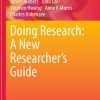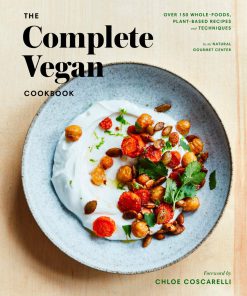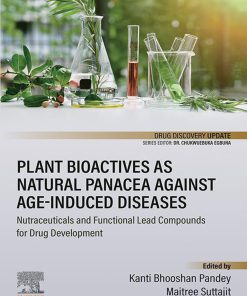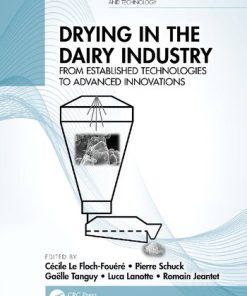Drying of Aromatic Plant Material for Natural Perfumes 1st Edition by Viplav Hari Pise, Ramakant Harlalka, Bhaskar Narayan Thorat ISBN 9781003315384 1003315380
$50.00 Original price was: $50.00.$25.00Current price is: $25.00.
Drying of Aromatic Plant Material for Natural Perfumes 1st Edition by Viplav Hari Pise, Ramakant Harlalka, Bhaskar Narayan Thorat – Ebook PDF Instant Download/Delivery: 9781003315384 ,1003315380
Full download Drying of Aromatic Plant Material for Natural Perfumes 1st Edition after payment

Product details:
ISBN 10: 1003315380
ISBN 13: 9781003315384
Author: Viplav Hari Pise, Ramakant Harlalka, Bhaskar Narayan Thorat
Drying of Aromatic Plant Material for Natural Perfumes 1st Edition Table of contents:
1 Aromatic Plants – Significance and Impacts
1.1 Significance of Aromatic Plants
1.2 Unit Operations – Dehydration and Extraction
1.3 Geography, Key Markets and Current Trends
1.4 Socio-Commercial Impacts
1.4.1 Petitgrain Oil – Paraguay
1.4.2 Rose Oil – Turkey and Bulgaria
1.4.3 Jasmin Oil – India
1.4.4 Lavender – Bulgaria, Ukraine, France and Spain
1.4.5 Mint Oil – USA and India
1.4.6 Vetiver Oil – Haiti
1.4.7 Frankincense and Myrrh – Somalia
1.4.8 Patchouli – Indonesia
1.4.9 Bergamot – Italy
1.4.10 Vanilla in Madagascar
1.4.11 Citronella – China and Indonesia
1.4.12 Geranium – China and Egypt
1.5 Conclusion
References
2 Cellular Structures of Aromatic Plant Materials
2.1 Introduction
2.2 Plant Tissues
2.2.1 Simple and Complex Tissues
2.2.2 Special Tissues
2.3 Histo-Architecture of Aromatic Plant Parts
2.3.1 Structures of Roots
2.3.2 Structures of Stem and Bark
2.3.3 Structures of Wood
2.3.4 Structures of Leaves
2.3.5 Structures of Flowers
2.3.6 Structures of Seeds and Fruit
2.3.7 Structures of the Rhizome
2.4 Special Tissues in Aromatic Plants
2.4.1 Osmophores
2.4.2 Glandular Trichomes
2.4.3 Ducts and Cavities
2.4.4 Epidermal Cells
2.5 Water in Tissue and its Functions
2.6 Conclusion
References
3 Need for Systematic/Controlled Dehydration of Aromatic Plants
3.1 Introduction
3.2 Herbs, Spices and Medicinal Plants
3.2.1 Classification of Herbs, Spices and Medicinal Plants
3.2.2 Shelf Life of Aromatic Plants and Medicinal Herbs
3.3 Importance and Need of Controlled Dehydration
3.4 Role of Drying in Extraction
3.5 Conclusion
References
4 Drying Technology and Selection of Dryers
4.1 Introduction
4.2 Fundamentals of Drying
4.2.1 Drying Process and Impacting Parameters
4.2.2 Drying/Dehydration Fundamentals
4.3 Drying of Agricultural Products
4.4 History and Development of Dryers
4.4.1 Development of Technology and Types of Dryers
4.5 Conclusion
References
5 Dehydration at Cellular Structures of Aromatic Plants
5.1 Introduction
5.2 Significance of Micro- and Macro-Structures
5.2.1 Water at the Cellular Level in Plants
5.3 Water Distribution and Drying of Plant Material
5.4 Role of Cellular Structures/Cell Wall and Quality of Dried Products
5.5 Conclusion
References
6 Fundamental Principles and Technologies for Extraction
6.1 Introduction
6.2 Methods in Extraction
6.2.1 Distillation
6.2.2 Assisted Extraction
6.2.3 Solvent Extraction
6.2.4 Pressurized/Accelerated Solvent and Subcritical Fluid Extraction
6.2.5 Molecular Distillation
6.3 Role of Drying in Extraction
6.4 Conclusion
References
7 Chemical Composition of Essential Oils
7.1 Introduction
7.2 Basics of Odours and Associated Complexity
7.3 Composition of Essential Oils
7.4 Chemical Compounds of Essential Oils
7.4.1 Hydrocarbons
7.4.2 Alcohols
7.4.3 Esters
7.4.4 Acids
7.4.5 Phenols and Phenol Ethers
7.4.6 Aldehydes and Ketones
7.5 Conclusion
References
8 Future Research Opportunities
8.1 Introduction
8.2 R&D Needs – Understanding the Histology and Drying
8.3 R&D Needs – Understanding of Dehydration Parameters and Technology for Multimode Dryer
8.4 R&D Needs – Understanding of Key Components and Specific Extraction
References
Annexure I
References
People also search for Drying of Aromatic Plant Material for Natural Perfumes 1st Edition:
difference between sun drying and mechanical drying
drying semi drying and non drying oils
how to use flower drying crystals
drying artemisia
drying plant samples
Tags: Viplav Hari Pise, Ramakant Harlalka, Bhaskar Narayan Thorat, Aromatic Plant, Natural Perfumes
You may also like…
Uncategorized
Uncategorized
Computers - Artificial Intelligence (AI)
Biology and other natural sciences - Biotechnology
Business & Economics - Management & Leadership
Engineering - Industrial Engineering & Materials Science
Particulate Drying: Techniques and Industry Applications Sachin Vinayak Jangam











